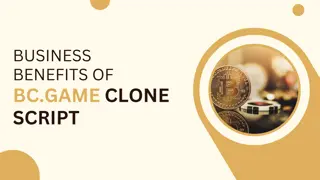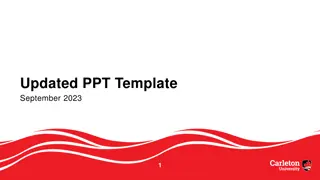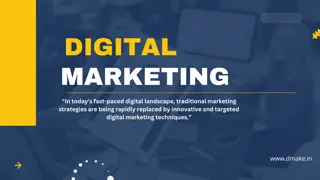Insights into Urban Studies: Sociological Variables and Cultural Influences
Delve into the world of urban studies, exploring how urban sociology investigates systematic causes and effects on people in urban environments. Discover the challenges of defining 'urban,' understanding informal city structures, and navigating public spaces. Uncover the cultural influences of cities and the dynamics of prejudice and discrimination, as well as the interplay between private and public spaces in urban landscapes.
Download Presentation

Please find below an Image/Link to download the presentation.
The content on the website is provided AS IS for your information and personal use only. It may not be sold, licensed, or shared on other websites without obtaining consent from the author.If you encounter any issues during the download, it is possible that the publisher has removed the file from their server.
You are allowed to download the files provided on this website for personal or commercial use, subject to the condition that they are used lawfully. All files are the property of their respective owners.
The content on the website is provided AS IS for your information and personal use only. It may not be sold, licensed, or shared on other websites without obtaining consent from the author.
E N D
Presentation Transcript
Urban is sociological variable affecting people systematic/identifiable ways; Urban sociology scientific study seeking to discover systematic causes and effects; Urban sociology has difficulty defining what is meant by urban ; Going to study city-matrix of structures and activities comprising largest, most complex social organizational forms;
Enacted-planned as a unit from beginning, changes are deliberate and planned out; Crescive-elements emerge gradually, interrelationships not due to formal deliberation but spontaneous accomodations among different parts; Ecology-refers to natural order worked out over time by individuals; variety of life forms use same environment in mutual ways;
Challenge of understanding informal structure of cities fact that urban areas lack physical or spatial closure; we have not reached limits of urban influence when we can no longer see city skyline on horizon; Another challenge: cities and nature of urban life vary among societies; Urban places look and operate differently within same society at different pts of time;
Public spaces- there is need to reach back into store of knowledge- of public or streetlore-about how to move through crowds, what seat to choose on bar or bus, how not to draw unwanted attention, conducting yourself while standing in lines; Cities as Culture- Cultural influences in city communicated to rest of society; high culture as representing true cultural expression of city; What do cities symbolize? City as dangerous place; high visibility of minorities and immigrant groups; cultural transitions, immigrant groups make peace with host society; transforming neighborhoods and streets;
Prejudice and discrimination leading to exclusion; Going private- public places-parks, squares, bear logos of corporate sponsors; bringing unpredictability of urban environment under control; e.g. surveillance of homeless, street kids, punks;
Structural elements channel perception and movement; Lynch(1960) identified five elements: paths, edges, districts, nodes, and landmarks; Paths- directs people travel in moving; Edges- barriers hemming in movement Districts- large areas having cohesive quality; e.g. Chinatown in SF; Nodes- smaller public places, junctions, turning pts, traffic circles, squares; Landmarks- outstanding feature of cityscape; anchor individual s mental map; people usually pass them rather than entering; (12)
Whyte(1988) How welcoming is our public space? People are drawn to other people and to crowds; obstructed pedestrians squeezing past are polite and unruffled (13) Crowded sidewalk schmoozers natural habitat; engineering of microenvironments important in whether space is seen as welcoming; Low ledges along buildings designed to discourage sitting intended to keep people moving; Food, sound of falling water, shade in summer and sunlight in winter will comfort them; Urban environments shape social life.
Lofland(1985) people taking matters into own handsmaking public space their own Passing from status of regular customer to patron to resident recognizable fixture in minds of others; colonized the territory a semi-privatized realm; Envelope- layer(s) of attitude, demeanor, and details of performance; other public actors where individual operates threatening to envelope one s envelope urban public space rich in situated energies;
Growth industry private consulting companies specializing engineering financially successful festivals; behind expression of solidarity and tradition are promoters doing business (25) theming of contemporary urban spaces promoting tourism leading to constantly improving level of facilities, amenities, and services; cities underwriting costs of stadiums, festival themed malls, convention centers (27)
Agents of development are doing urban sociology; applied sociology; modifying urban environments produce particular perceptions/ behaviors compatible with profit motive; Faciliating recreational behavior or shaking down the suckers Disney and the sanitation of experience making public spaces safe and predictable
Offering natural setting dramatic political expression; providing large #s of people that can be mobilized; providing critical mass; containing large numbers of poor and minorities; confrontations between law enforcement, poor and minorities; streets and public squares provide setting for massing of human energies e.g. Stonewall defiance against suppressed right to gay sexual identity























